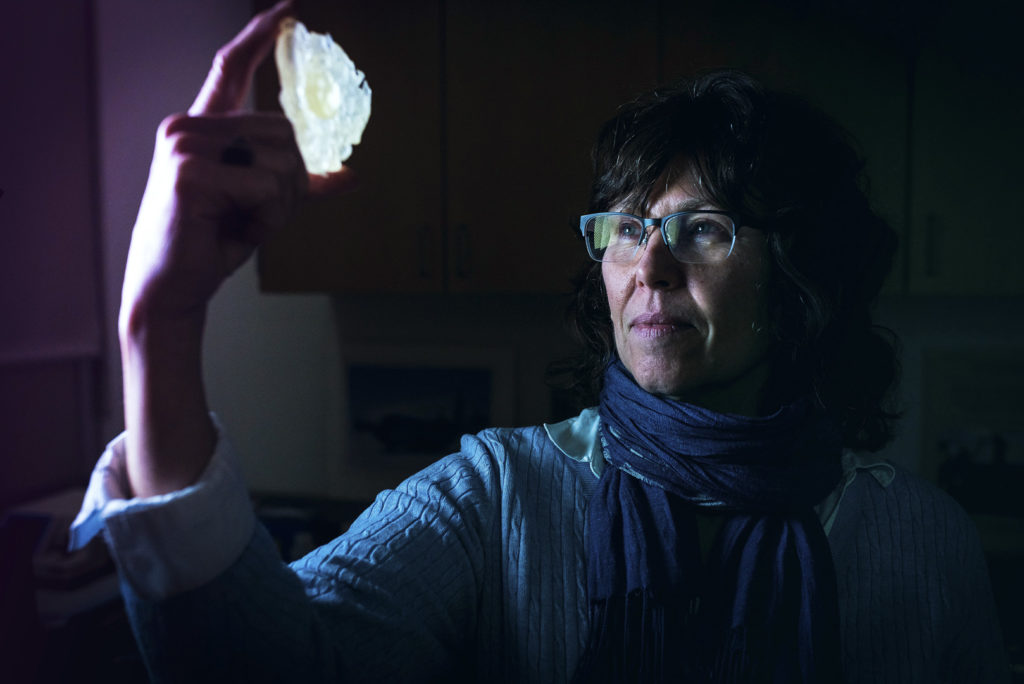Can a single-celled organism from the sea be smart?
Charles Darwin, the legendary naturalist, seemed to think so, at least according to a letter he penned in 1873 to invertebrate zoologist and physiologist William Benjamin Carpenter about micro-organisms known as foraminifera (forams for short). In it, he wrote, “My dear Carpenter… The case of the three species of protozoan which apparently select differently sized grains of sand, etc., is almost the most wonderful fact I ever heard of. One cannot believe that they have mental power enough to do so, and how any structure or kind of viscidity can lead to this result passes all understanding.”
It sounds like a lot of braininess for something so miniscule. But according to Joan Bernhard, a senior scientist at Woods Hole Oceanographic Institution, it’s not an overstatement.
“Although they don’t have brains, foraminifera are really smart in the way they build their shells,” she says.
Geometric wonders
Bernhard, who has been studying forams for more than three decades, says a species known as Astrammina triangularis is a good a case-in-point. The organisms, which she and colleagues collected in Antarctica during a series of under-ice scuba dives in 1993, begin their life as a single spherical cell surrounded by a few grains of sand. Over time, they build their shells using encasing sediment, the way a mason might build a wall with bricks. As the organisms grow, their shells take on a triangular shape (thus explaining the species name), with each apex being an opening in the shell for the forams’ stringy, arm-like projections (known as reticulopods).
By feel, the animals are able to figure out how their shells will need to change in order to maximize their ability to forage and move about. To grow, they create new apexes along the edges of their shells, which typically causes the shells to morph from a triangle into a square, then to a pentagon, and ultimately into other shapes like hexagons, heptagons, and octagons.
‘Brains’ and beauty
This kaleidoscopic shell-building ability not only makes foraminfera clever, but attractive as well. Some forams develop calcium carbonate shells with exquisite designs that have captured the imagination of painters, sculptors, and other types of artists with whom Bernhard has collaborated to communicate their scientific importance.
“My post doc advisor is very artistic and I’m very visually oriented,” she says. “He and I began working together to find ways to artistically express the value of our research. I made the science-art connection a part of a proposal, as it was what I wanted to do for my public outreach.”
Forams were the theme of a science-through-art exhibition earlier this year in Lake George, New York, called “Adaptations to Extremes.” Artists displayed their works to help communicate the science behind the organisms’ ability to adapt to extreme habitats, such as California’s oxygen-depleted Santa Barbara Basin, where the single-celled wonders live in abundance.
Natural archives
While they lend themselves well to art, Bernhard says forams are a serious tool for studying marine biology, and for understanding our past climate. The shells of forams living on the seafloor, along with those that died and sank to the bottom of the ocean, are time capsules: they hold clues to the geochemistry of the environment where and when their shells were developing.
“These things have likely been around since the Precambrian, long before animals evolved,” she says. “They are highly diverse; you can find them anywhere from coastal estuaries to the very bottom of the Mariana Trench, from the tropics to the highest latitudes. They’re a great tool for understanding our planet’s history.”
She points out, however, that there are some downsides to studying forams. For example, they don’t move very fast, so it can be hard to tell live ones from dead ones when working with them in the lab. And it’s extremely difficult to culture them like phytoplankton or some other single-celled organisms.
But Bernhard doesn’t let these negatives get in the way of her love affair with foraminifera, which she endearingly refers to as her ‘little friends.’
“Nearly every time I examine the cell structure of a different species, I discover some new adaptation that has allowed them to survive in a ‘hostile’ habitat,” she says. “They never cease to amaze me!”
Original post https://alertarticles.info
